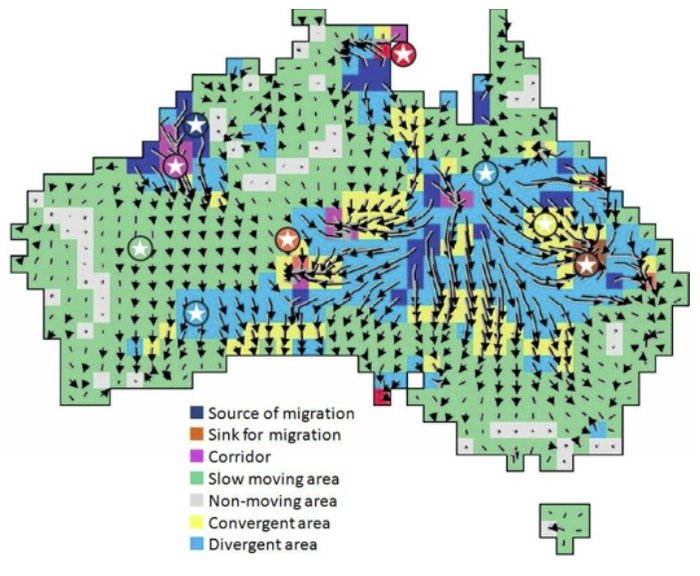Speed and direction of climate shifts over the past 50 years in Australia. Credit: CSIRO
CANBERRA, Australia, Feb. 10 (UPI) -- New global maps show how fast and in which direction local climates have shifted, Australian researchers said Monday
The maps, developed by an international team of researchers, point to a simpler way of looking at climatic changes and their likely effects on biodiversity, because as climate change unfolds over the next century plants and animals will need to adapt or shift locations to track their ideal climate, Australia's Commonwealth Scientific and Industrial Research Organization said.
"The maps show areas where plants and animals may struggle to find a new home in a changing climate and provide crucial information for targeting conservation efforts," CSIRO's Elvira Poloczanska said in a release.
The study, published in the journal Nature, combined an analysis of sea surface and land temperature data from 1960 to 2009 with two future scenarios for marine environments, described as "business as usual" in one scenario and a 3.1 degree F temperature increase in the other, to yield maps showing where new thermal environments are being generated and where existing environments may disappear.
"The maps show us how fast and in which direction temperatures are shifting, and where climate migrants following them may hit barriers such as coastlines," said researcher Kristen Williams. "Our work shows that climate migration is far more complex than a simple shift toward the poles."
Species migration can have important consequences for local biodiversity, and Australia is no exception, the researchers said.
"Across Australia, species are already experiencing warmer temperatures," Williams said. "In terrestrial habitats, species have started to seek relief by moving to higher elevations, or further south. However, some species of animals and plants cannot move large distances, and some not at all."















